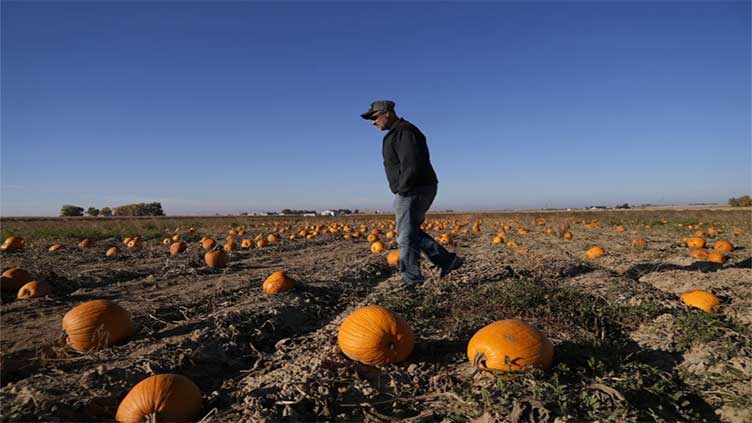Water woes, hot summers and labor costs are haunting pumpkin farmers in the West

Business
Water woes, hot summers and labor costs are haunting pumpkin farmers in the West
Hudson, CO. (AP) — Alan Mazzotti can see the Rocky Mountains about 30 miles west of his pumpkin patch in northeast Colorado on a clear day. He could tell the snow was abundant last winter, and verified it up close when he floated through fresh powder alongside his wife and three sons at the popular Winter Park Resort.
But one season of above-average snowfall wasn’t enough to refill the dwindling reservoir he relies on to irrigate his pumpkins. He received news this spring that his water delivery would be about half of what it was from the previous season, so he planted just half of his typical pumpkin crop. Then heavy rains in May and June brought plenty of water and turned fields into a muddy mess, preventing any additional planting many farmers might have wanted to do.
“By time it started raining and the rain started to affect our reservoir supplies and everything else, it was just too late for this year,” Mazzotti said.
For some pumpkin growers in states like Texas, New Mexico and Colorado, this year’s pumpkin crop was a reminder of the water challenges hitting agriculture across the Southwest and West as human-caused climate change exacerbates drought and heat extremes. Some farmers lost 20% or more of their predicted yields; others, like Mazzotti, left some land bare. Labor costs and inflation are also narrowing margins, hitting farmers’ ability to profit off what they sell to garden centers and pumpkin patches.
This year’s thirsty gourds are a symbol of the reality that farmers who rely on irrigation must continue to face season after season: they have to make choices, based on water allotments and the cost of electricity to pump it out of the ground, about which acres to plant and which crops they can gamble on to make it through hotter and drier summers.
Pumpkins can survive hot, dry weather to an extent, but this summer’s heat, which broke world records and brought temperatures well over 100 degrees Fahrenheit (38 degrees Celsius) to agricultural fields across the country, was just too much, said Mark Carroll, a Texas A&M extension agent for Floyd County, which he calls the “pumpkin capital” of the state.
“It’s one of the worst years we’ve had in several years,” Carroll said. Not only did the hot, dry weather surpass what irrigation could make up for, but pumpkins also need cooler weather to be harvested or they’ll start to decompose during the shipping process, sometimes disintegrating before they even arrive at stores.


